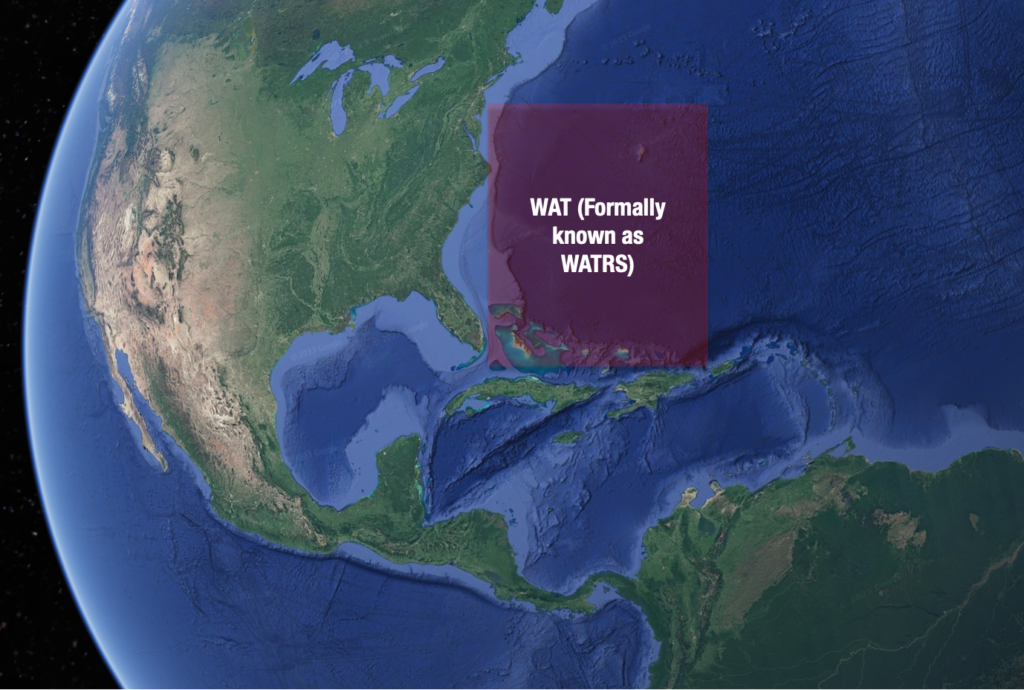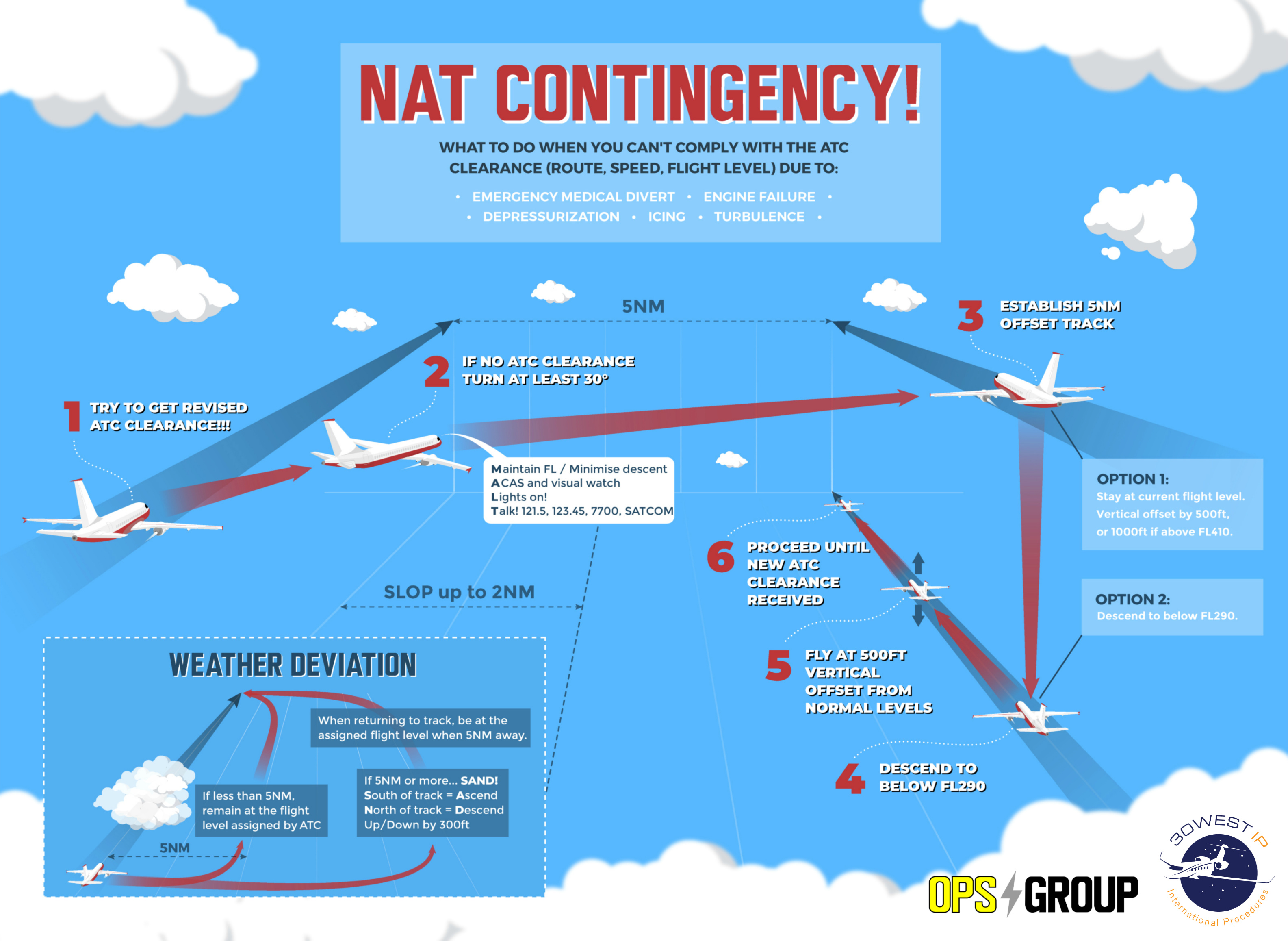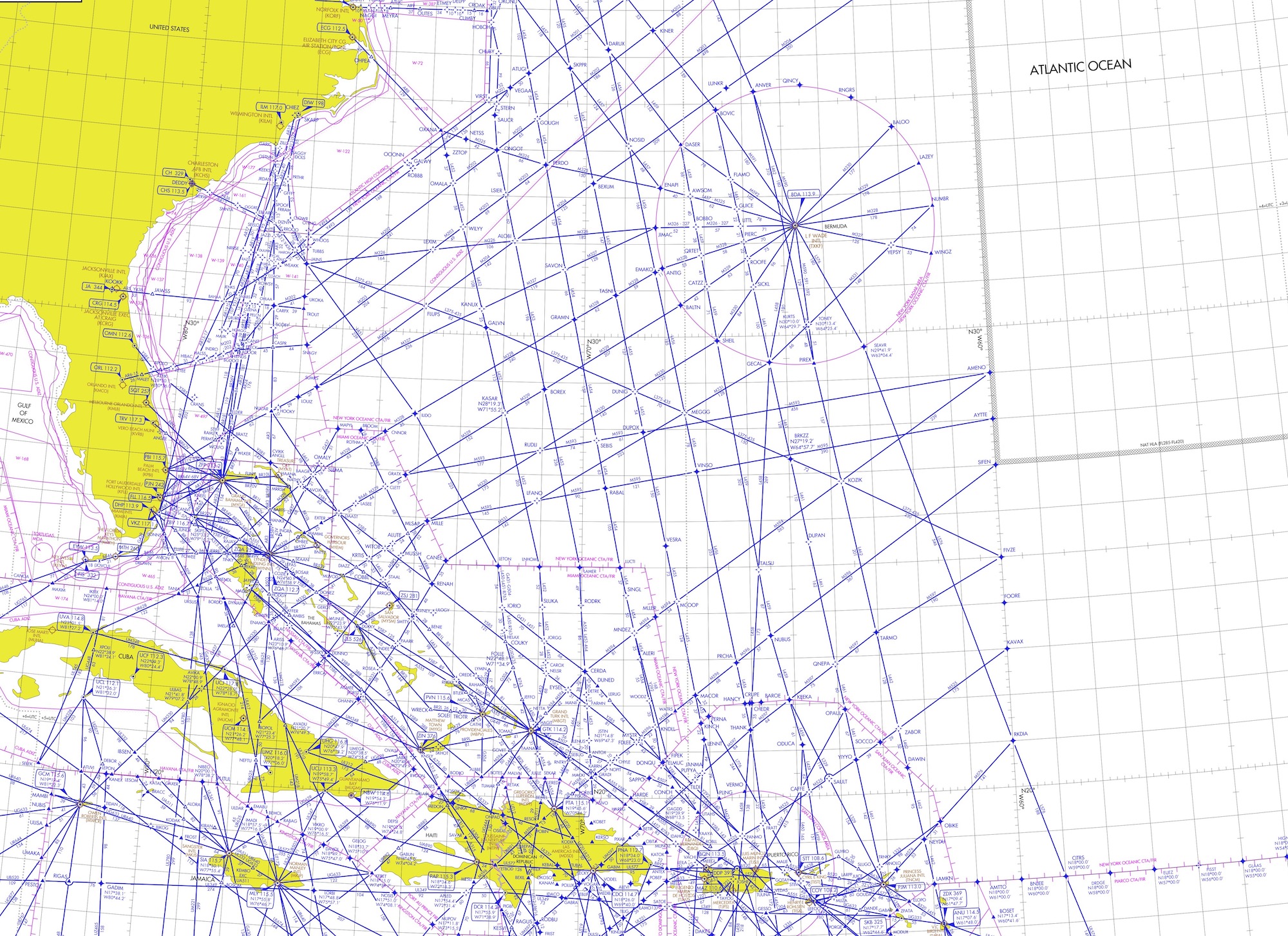Key Points
- The US FAA has officially renamed WATRS airspace in the West Atlantic, to simply WAT.
- Part 91K, 121, 125 and 135 operators will all be affected by the change. Existing B050 authorizations will be re-issued within 24 months.
If you’re not familiar with WATRS, it is a large chunk of airspace off the US East Coast comprised of fixed routes that provide huge volumes of oceanic traffic to and from the NAT HLA with lateral separation. From 7 Sep 2023, it’s been renamed WAT.
What was wrong with the old name?
The FAA dig into this in their recent notice. Essentially back in 2020, New York ATC asked users to stop using the term ‘WATRS airspace’ because it was causing some confusion.
Apparently, some users were associating it simply with the New York West Oceanic CTA. When, in reality it also spans the San Juan CTA and the Atlantic portion of the Miami Oceanic CTA too.
It is purely an issue of semantics. Now we need to call it WAT instead so that it better aligns with ICAO regions.

Has the physical boundary changed?
Nope. It is a name change only, and the existing set up remains the same.
Then why do we need to know?
If you traverse the NAT a lot, no doubt you are quite familiar with the term WATRS. But you are unlikely to hear it anymore.
It will be progressively replaced with the unfamiliar term WAT in charts, reference material and approvals. And so, a little background helps.
A number of important FAA documents will need to be updated. The most significant is LOA B050 which will be re-issued to all operators over the next 24 months.
LOA B045 (Extended Overwater Operations Using a Single Long-Range Communication System) will also be revised when some extra paper-pushing gets done behind the scenes.
Your company’s internal manuals and guidance will also need to be changed to avoid ‘reverse training’ the older, obsolete name.
WAT about other NAT changes?
While we have you, there’s been another small change to NAT ops to report.
On September 18, ICAO revised the ‘Oceanic Errors’ NAT Ops Bulletin – the doc which has all the advice for operators on how to avoid the most common mistakes when flying the North Atlantic.
These include: Gross Nav Errors, Large Height Deviations, and Longitudinal Separation busts. There’s also some advice on Flight Planning, SLOP, and some CPDLC things to watch out for.
You can download it here.
Looks like there are no significant changes in terms of content for this updated version when compared with the old one – they’ve just tidied it up a bit.
But if you operate over the North Atlantic it’s still worth a read, as there’s lots of top tips on how to avoid the most common “gotchas”!
Contingency and Weather Deviation Procedures were updated back in 19’, and rolled out to all oceanic airspace worldwide in November 2020. We produced this chart at the time:

Do You Have a NAT Conundrum?
 Ah, NAT conundrums! We love them so much, we’ve published three entire Volumes already!
Ah, NAT conundrums! We love them so much, we’ve published three entire Volumes already!
Volume I covered the following three conundrums:
1. To SLOP, or not to SLOP?
2. What’s the difference between the NAT Region and the NAT HLA?
3. Can I fly across the North Atlantic without Datalink?
Volume II covered these additional three:
4. Do you need to plot on Blue Spruce Routes?
5. Do we still fly Weather Contingency Procedures on Blue Spruce routes?
6. When can we disregard an ATC clearance and follow the contingency procedure instead?
Volume III was solely dedicated to:
7. GOTA airspace datalink and ADS-B requirements.
We’re always on the lookout for more conundrums, so please get in touch with the team on team@ops.group with any NAT related questions or queries. We’ll do our best to answer them, or put you in touch with someone who can.
More on the topic:
- More: NAT Crossing after GPS spoofing: a guide
- More: NAT Doc 007 – New Edition
- More: Don’t Climb! A Big NAT No-No
- More: Oceanic Clearance Removal mess – Version 4!
- More: NAT Clearance changes – a game! (V4)
More reading:
- Latest: Teterboro: RIP the RUUDY SIX
- Latest: 400% increase in GPS Spoofing; Workgroup established
- Latest: GPS Spoofing WorkGroup 2024
- Safe Airspace: Risk Database
- Weekly Ops Bulletin: Subscribe
- Membership plans: Why join OPSGROUP?











 Get the famous weekly
Get the famous weekly 





